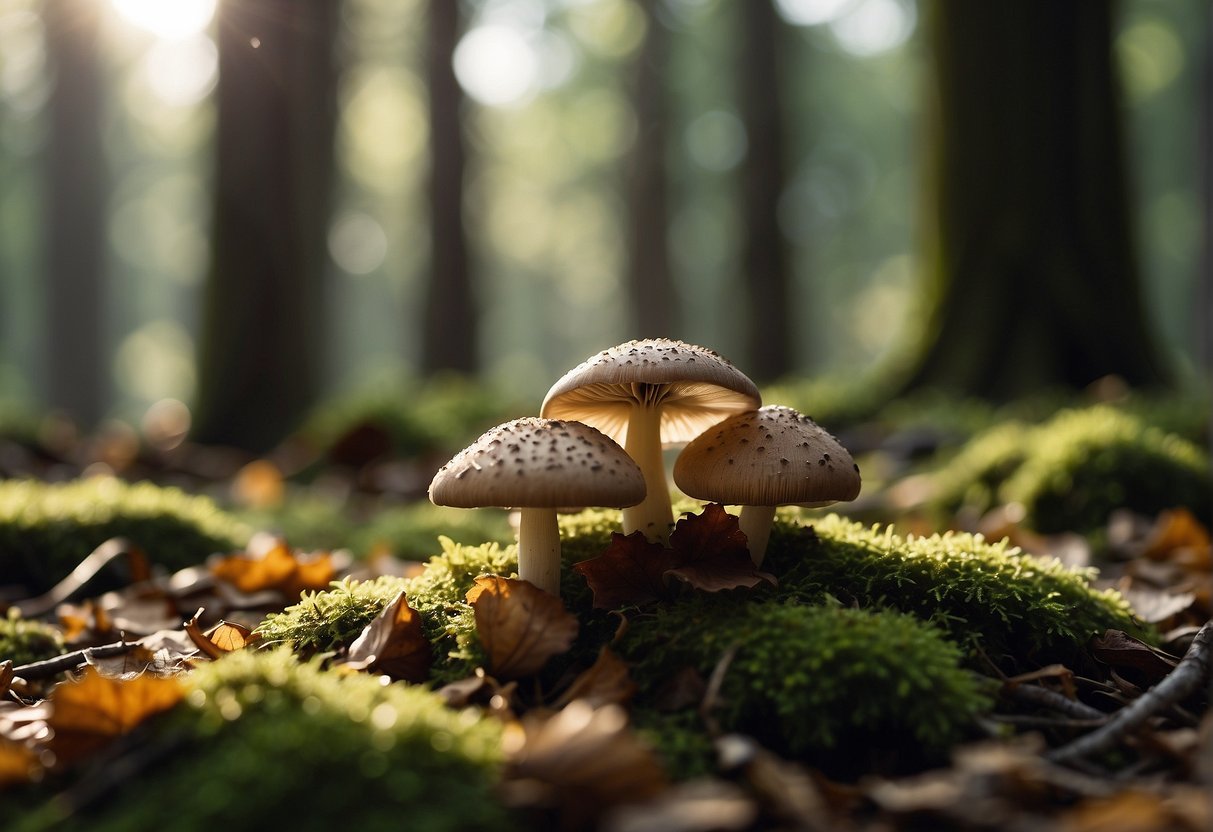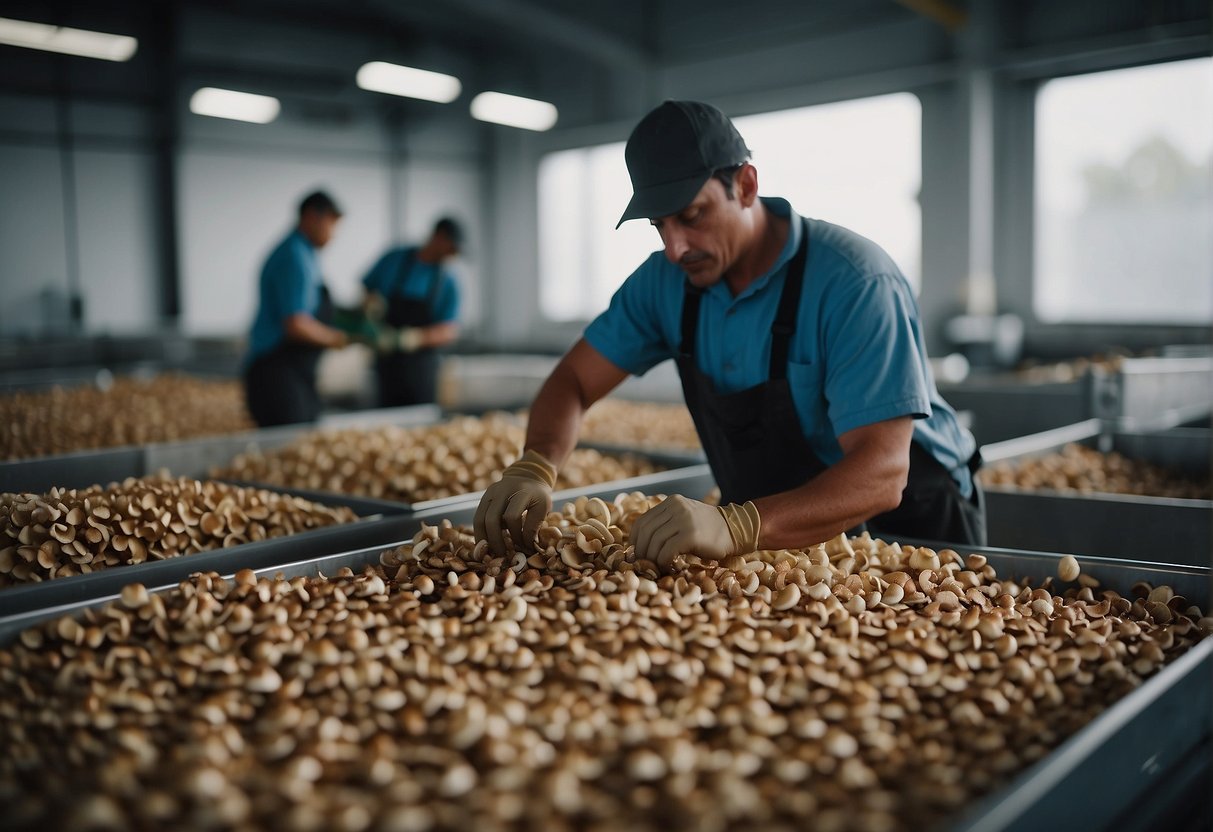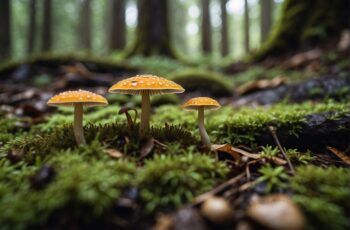Understanding the intricacies of mushroom harvesting is essential for anyone who ventures into the forest or tends their mushroom patch with the goal of gathering these remarkable fungi. Mushrooms are unlike other crops; they have unique growth cycles and fruiting patterns that necessitate special considerations when it comes time to harvest. Knowing when and how to harvest mushrooms can mean the difference between a bounty of fresh, flavorful fungi and a missed opportunity. Whether you are a seasoned forager or a backyard cultivator, grasping the nature of these organisms will enhance your mushroom harvesting experience.

Mushroom varieties each have their specific cues for the ideal harvesting time. This can range from observing the cap size and shape to understanding the mushroom’s growth stages. Techniques for harvesting are equally diverse. Some varieties benefit from being cut, while others are best when gently twisted from their growing medium. The method can impact the health of future growth, so it’s important to match the technique with the type of mushroom. After the harvest, proper post-processing, such as cleaning and storage, is crucial to preserving the quality and extending the shelf life of your mushrooms.
Key Takeaways
- Recognizing the right time to harvest can significantly improve your yields.
- Employing the correct harvesting technique is vital for mushroom health and regeneration.
- Effective post-harvest processing ensures the longevity and quality of mushrooms.
Understanding Mushroom Biology
In this section, you’ll get a clear understanding of the core elements that make mushrooms fascinating for cultivators and nature enthusiasts alike, focusing on the mycelium, its relationship with various substrates, and the stages throughout a mushroom’s lifecycle.
Mycelium and Substrate
Mycelium is the vegetative part of a fungus, consisting of a network of fine white filaments (hyphae) that are crucial for the growth of most mushrooms. This mycelium network extends underground or within its food source – the substrate – and is to mushrooms what roots are to plants.
It’s important for you to know that different mushrooms require different types of substrates. For example, Agaricus bisporus, commonly known as the button mushroom, prefers composted substrate rich in microbial activity. On the other hand, Psilocybe cubensis, a species used for its psychedelic properties, grows best on grain-based substrates. The substrate not only provides nutrients but also affects the development and efficiency of rhizomorphs, thicker mycelium strands that help absorb nutrients more effectively.
Lifecycle of Mushrooms
Mushrooms reproduce through spores, which are similar to seeds in plants. For successful cultivation, you must allow these spores to colonize a substrate, forming mycelium. The lifecycle includes several stages:
- Spore germination: Under the right conditions of moisture and temperature, spores will germinate.
- Mycelium growth: The germinated spores grow into a mycelium network that assimilates nutrients from the substrate.
- Fruiting body formation: Once mature, the mycelium produces a fruiting body, which is the part of the mushroom you’re familiar with above the ground.
It’s good to keep in mind that conditions need to be closely monitored for optimal growth, with factors such as humidity and temperature affecting each stage. By being attuned to the biology of mushrooms and their environmental needs, you’ll have a better chance of a successful harvest.
Harvesting Techniques
When you’re after a successful mushroom harvest, knowing the right technique is crucial. It ensures not only a plentiful yield but also maintains the integrity of your mushrooms for future growth.
Recognizing Harvest Readiness
To maximize your harvest, it’s vital to understand when mushrooms are ripe for picking. Typically, the ideal harvesting window for mushrooms such as psilocybin aligns with the veil break stage. This is when the thin layer of tissue connecting the cap to the stem tears away, signifying that the chemicals responsible for the effects of magic mushrooms have reached their peak concentration. Size is another indicator; many mushrooms are best harvested when the caps are fully open, yet before the spores start dropping.
Cutting vs. Pulling
There are two prevalent methods for harvesting mushrooms: cutting and pulling. Cutting involves using a knife or scissors to snip the stem, causing minimal disruption to the mycelium below. This is often recommended as it likely reduces harm to the developing fungi, preserving the yield for subsequent flushes. Pulling, on the other hand, might be quicker but risks damaging the mycelium – the intricate web that spawns future mushrooms.
Handling and Preservation
Once harvested, handle your mushrooms gently to prevent bruising and preserve their shelf life. Use a sharp knife to trim any excess substrate from the stem. Store them in a cool, dry place to extend their freshness. Proper handling and preservation are key to maintaining the quality and flavor of your mushrooms from the forest to the table. Make sure your tools are clean and your hands are washed, as proper hygiene is essential, especially when you’re dealing with varieties like psilocybin mushrooms, where cleanliness is paramount for safe consumption.
Mushroom Varieties and Their Specifics
Understanding the specifics of various mushroom varieties is crucial for successful cultivation and harvesting. From the distinctive flavors and textures to the ideal growing conditions, each type has its own set of characteristics that you’ll want to get familiar with.
Oyster Mushrooms
Oyster mushrooms, recognizable by their broad, fan-like shape, are one of the easiest edible varieties to grow. Their flavor is subtle, often described as woodsy or anise-like. Gills under the caps are white to cream-colored. Oyster mushrooms come in several colors, including grey, white, pink, and yellow. When spawning oyster mushrooms, the process can often be completed in six weeks, with the cropping phase occurring multiple times off the same substrate.
Shiitake Mushrooms
Shiitake mushrooms are famed for their rich, savory flavor and slightly chewy texture. These prized mushrooms sport a distinctive umbrella shape and have a characteristic brown color. Shiitake growth entails a more complex agaricus mushroom growing process and usually involves inoculating hardwood logs or sawdust blocks. Spawn run and colonization can take several months, but the result is a highly sought-after edible mushroom used in numerous culinary dishes.
Morel Mushrooms
Highly celebrated by gourmet chefs and foragers, morels are unique in appearance with their honeycomb-like exterior. Morels vary in color from creamy to dark brown and offer an earthy, nutty flavor that makes them highly desired. Unlike oyster and shiitake mushrooms, morels are not typically cultivated but are gathered in the wild during the spring. Their distinctive texture and taste are a testament to the role that environmental conditions play in developing the complex characteristics of edible mushrooms.
Post-Harvest Processing

After you’ve successfully grown your mushrooms, the critical post-harvest processing starts. This is where you ensure your hard work pays off by properly cleaning and storing your mushrooms, and understanding the nuances of the cropping cycle to maximize your yields.
Cleaning and Storage
Cleaning your harvest is your first priority. Remove any casing or substrate remnants from the mushrooms gently but thoroughly. For oyster mushrooms and other varieties, using a soft brush can be effective. You aim to keep the mushrooms dry to prevent spoilage, so washing them is not usually recommended.
For storage, mushrooms have a high water content and need to be stored in a cool place. A fridge set to 2-4 degrees Celsius is ideal. Store them in paper bags rather than plastic to allow them to breathe and minimize moisture build up. This method preserves their freshness for as long as possible, typically 1 to 8 days post-harvest.
Cropping Cycle and Yield Maximization
Your mushroom farming success heavily relies on your knowledge of the cropping cycle. The cycle begins with preparation—mixing the mushroom substrate, which often includes materials like straw and manure, with water. Once this mixture reaches the desired state, it’s time for Phase II composting, a crucial step to develop a rich mushroom compost.
Next, incorporate casing, a layer of soil or peat moss that’s applied on top of the compost where the mushrooms will fruit. The casing is vital as it holds water and creates a micro-environment for the developing mushrooms.
Throughout the cropping cycle, pay attention to carbon dioxide levels. High levels may suppress mushroom growth and need to be controlled.
To maximize your yield, follow the six steps to mushroom farming diligently and harvest during the peak mushroom flush. Mushroom yield depends on the variety, but for button mushrooms, expect several flushes spaced about a week apart. Each subsequent flush after the first will likely yield 50% to 90% fewer mushrooms.
Maintaining the proper conditions throughout each step—substrate preparation, composting and casing—ensures that you can enjoy the fruits of your mushroom farming with confidence. Remember, attention to detail in post-harvest processing can make all the difference.


